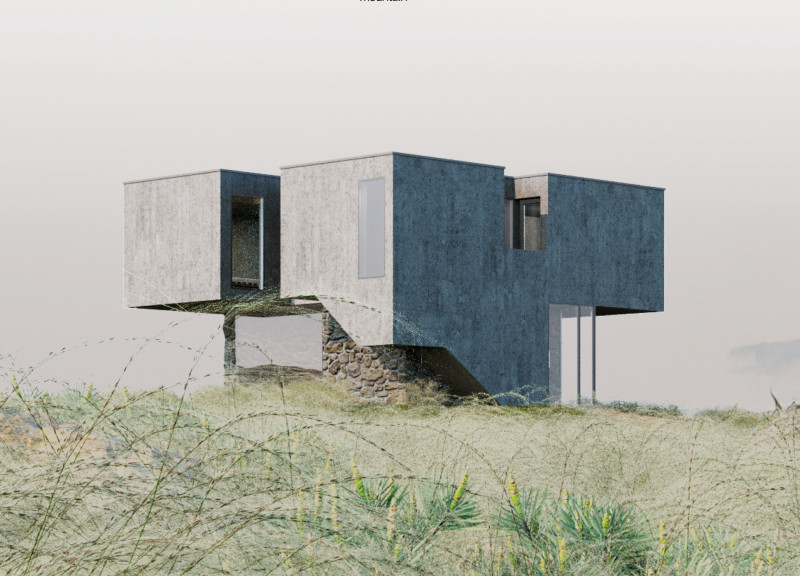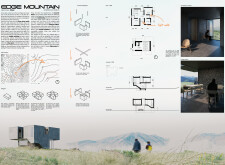5 key facts about this project
## Project Overview
Located at an altitude of 1000 meters in the French Alps, the Edge Mountain design project is positioned within a rugged landscape that emphasizes both its natural beauty and functional living requirements. The primary intent of the project is to harmonize the built environment with the surrounding alpine terrain, creating a residential space that offers both comfort and aesthetic value while maintaining an ongoing relationship with nature.
## Spatial Configuration and User Experience
The architectural layout is centered around a series of modular cubic forms that respond directly to the sloped topography, fostering a balance between privacy and communal interaction. The living spaces are strategically oriented with expansive windows that frame views of the mountains and provide a strong connection to the outdoors. Circulation areas are designed with light wells that facilitate movement while enhancing the overall sense of openness. The interior spaces are intentionally flexible, allowing for reconfiguration to accommodate various activities and occupancy levels.
## Material Selection and Sustainability
The selection of materials is critical to the project's resilience against the harsh alpine climate. Concrete serves as the fundamental structural element, providing stability, while stone accents on certain facades offer a textural connection to the nearby natural environment. Large glass panels enhance interior illumination and seamlessly integrate visual access to the landscape. The elevated design minimizes disturbance to the ecosystem, preserving the natural flora and fauna below, while passive solar strategies such as strategic window placement contribute to energy efficiency by reducing reliance on artificial lighting and heating.
Advanced technical methods, including integrated cross beam systems and modular construction techniques, further reinforce both the structural integrity and adaptability of the design, promoting longevity and potential future modifications.



















































